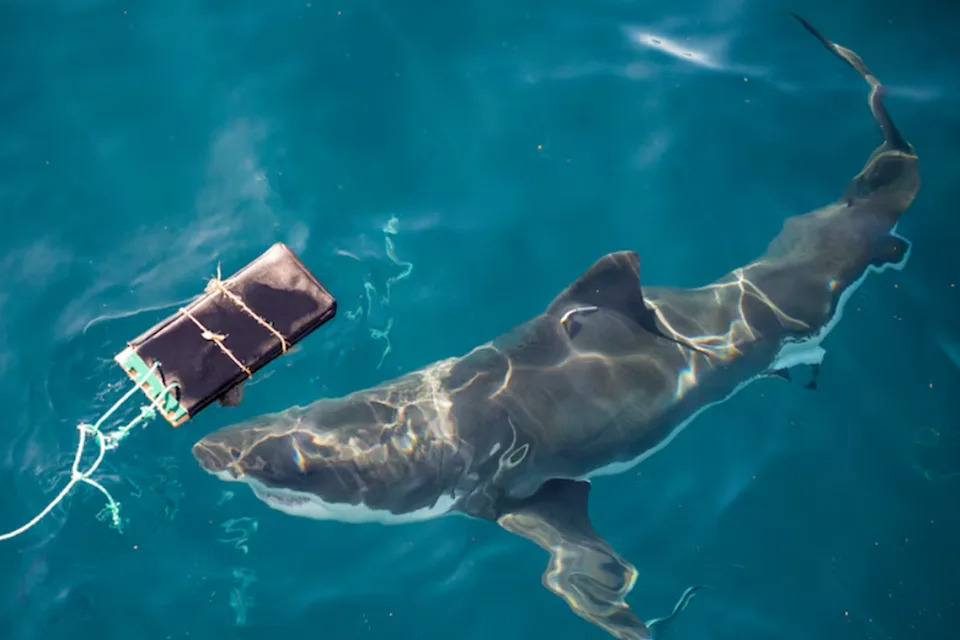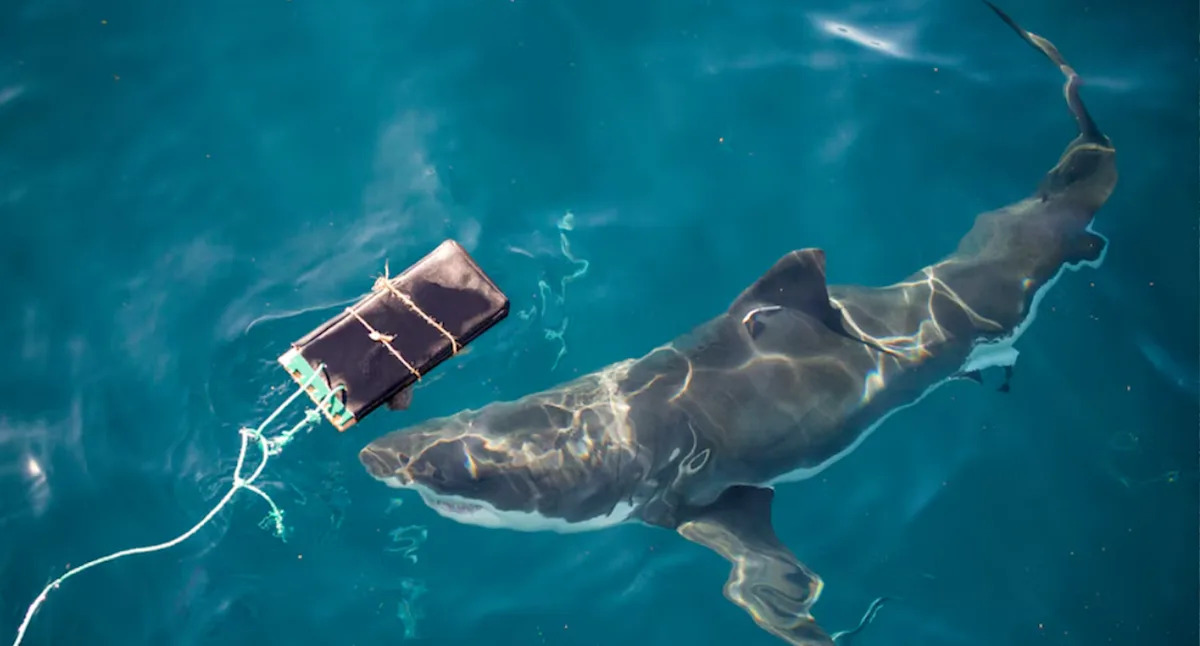Four bite-resistant materials have been put to the test against some of Australia’s most dangerous predators. Researchers from Flinders University spent around 30 days at sea, attracting white and tiger sharks to their boat using fish guts and then dangled samples of hi-tech wetsuit materials into the water.
Incredible video supplied to Yahoo News by the scientists shows sharks thrashing about, trying to tear apart 3mm thick fabric samples. Each was attached to a block of wood that was coated in specialist EVA foam — a material used by surgeons that’s designed to mimic the properties of human flesh.
Lead author of the study, Dr Thomas Clarke, told Yahoo News Australia the team worked hard to get “strong bites” that were representative of the type that would inflict injuries.
They found that all four materials, Aqua Armour, Shark Stop, ActionTX-S and Brewster, reduced the amount of critical large lacerations and punctures inflicted by the sharks, despite them being different in design.
“The majority of fatalities and significant injuries from shark bites are related to blood loss or haemorrhaging, so reducing that will go a long way to protecting lives and reducing damage,” Clarke said.
Wetsuits tested as deadly shark net controversy grows
Deaths from shark bites are extremely rare in Australia, with cows, horses and dogs responsible for more deadly attacks.

Researchers tested four types of bite-resistant wetsuit fabric – Aqua Armour, Shark Stop, ActionTX-S and Brewster. Source: Flinders University
The research was funded by the NSW Department of Primary Industries, which is responsible for the state’s shark mitigation program, and the Australian Research Council. It was published by the CSIRO in the journal Wildlife Research on Thursday as debate rages over the future of the use of shark nets, which were introduced in the 1930s and routinely kill or harm dolphins, whales, endangered turtles and other non-target species.
A NSW trial to remove shark nets at some beaches was put on hold following the fatal shark attack of a surfer at Dee Why Beach earlier this month. Mercury Psillakis was outside the netted area when he was mauled by a large great white.
Further north in Queensland, the nets have been responsible for the entanglement of multiple humpback mothers and their calves this migration season. There is scant evidence linking their use to a reduction in shark attacks at Australia’s beaches.
Clarke notes that personal mitigation strategies put the onus on the water user rather than state governments to reduce shark attacks.
Prior to the development of bite-resistant materials, personal shark deterrents usually involved an electric device that was strapped around the ankle or placed on the bottom of a board.
“Wetsuits are traditionally used around temperate to subtropical Australia, so it’s probably a mitigation effort that might be more easily taken up by people going in the water,” Clarke said.
“If people are buying wetsuits anyway for their surfing and diving, if you can build in that extra level of protection, it might be more enticing for some water users to use this approach.”
Love Australia’s weird and wonderful environment? 🐊🦘😳 Get our new newsletter showcasing the week’s best stories.


